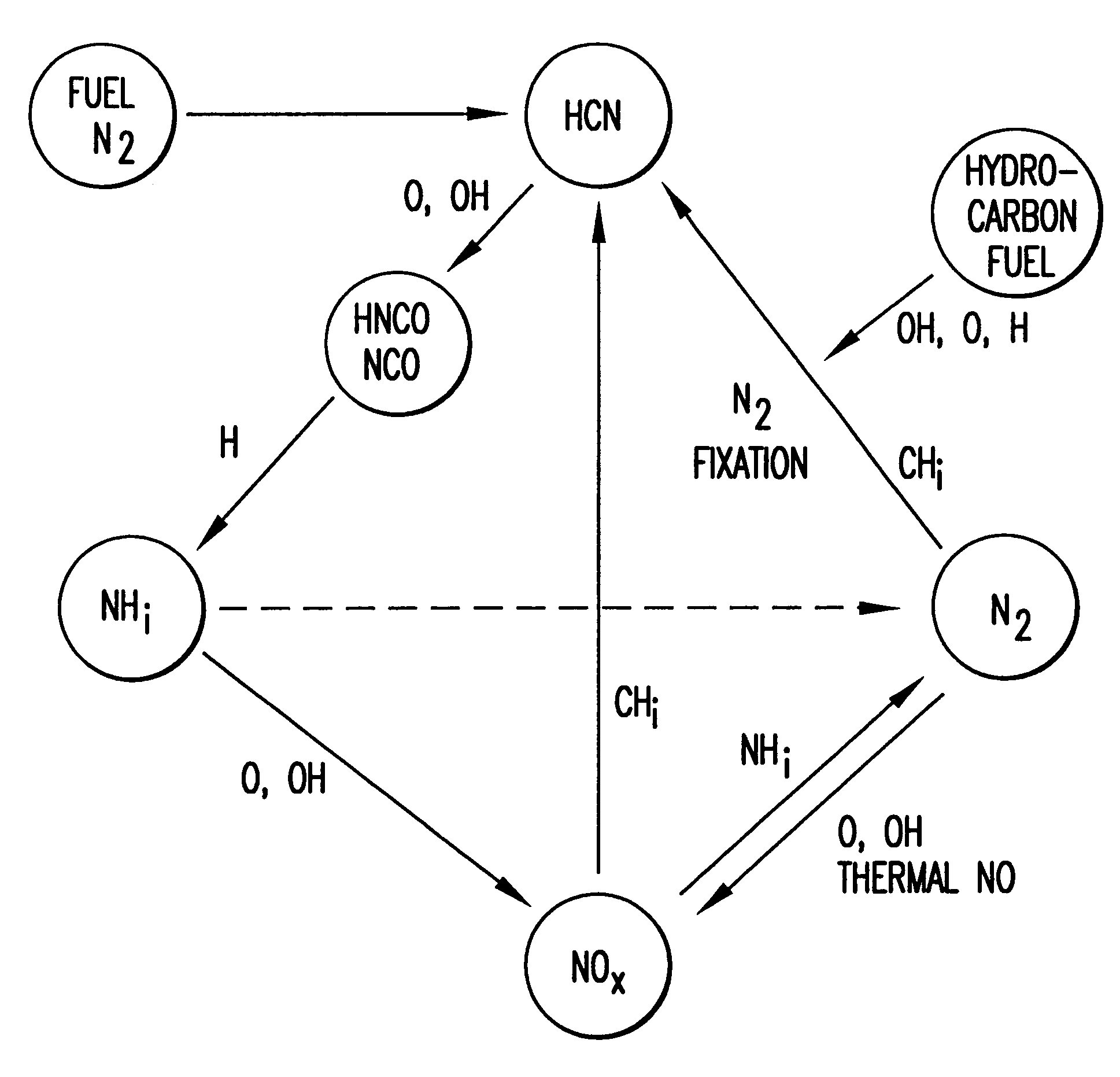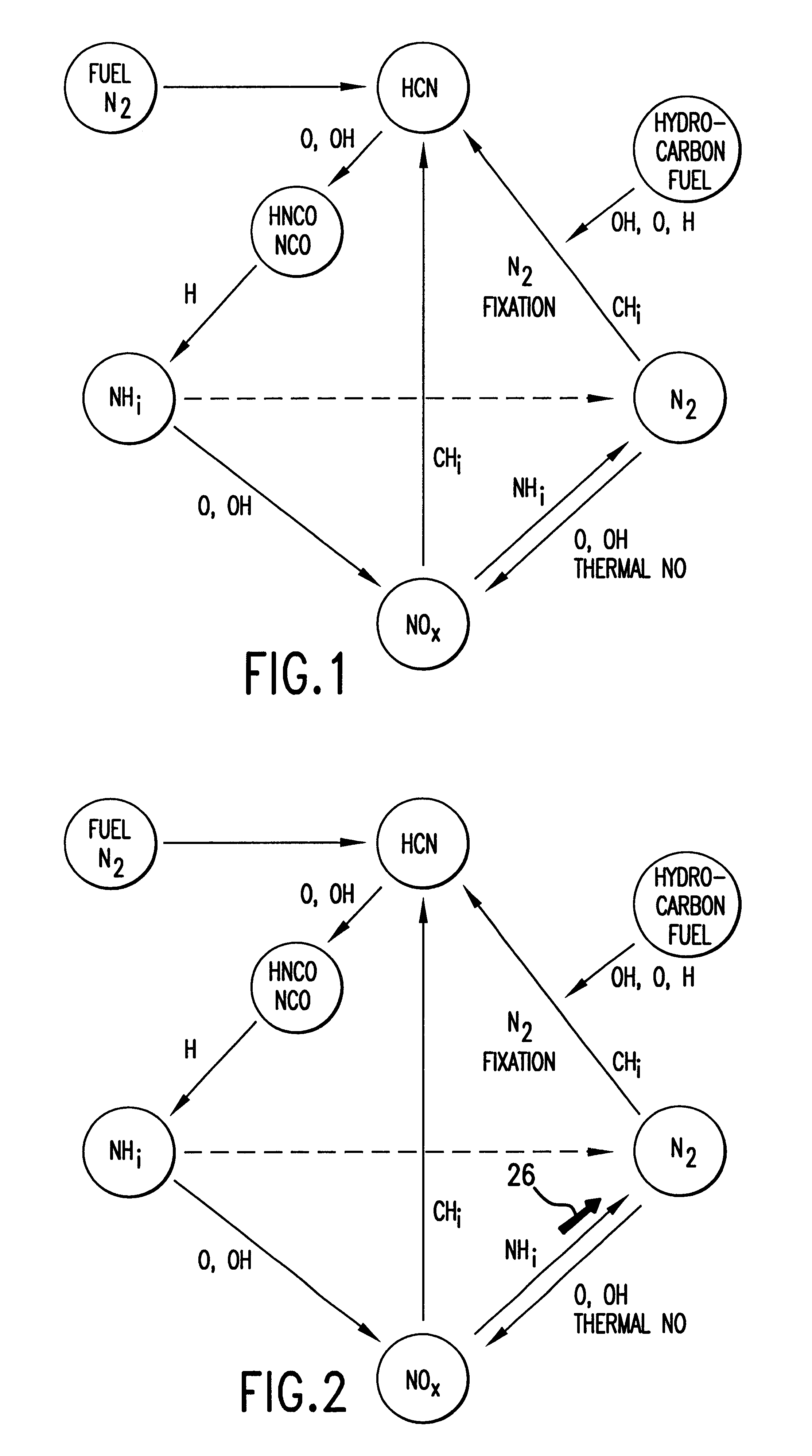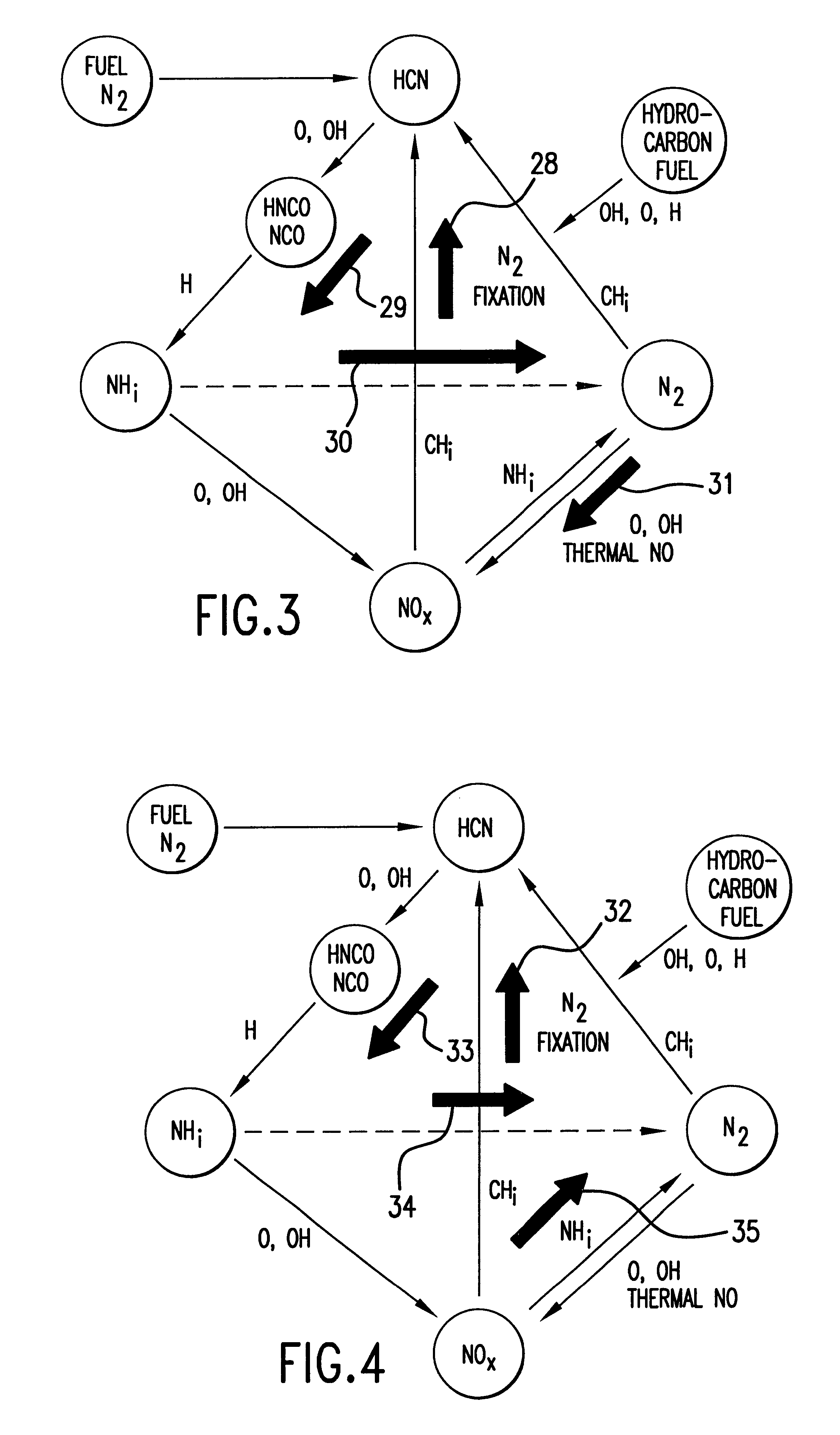Method and apparatus for NOx reduction in flue gases
a technology of flue gas and reduction method, which is applied in the direction of lighting and heating apparatus, combustion types, separation processes, etc., can solve the problems of undesirable nitrogen oxide generation and emission, the implementation of conventional reburn technology requires a relatively tall furnace, and many furnaces in the united states do not have the internal volume required for retrofitting this technology
- Summary
- Abstract
- Description
- Claims
- Application Information
AI Technical Summary
Benefits of technology
Problems solved by technology
Method used
Image
Examples
Embodiment Construction
As shown in FIG. 5, the apparatus for reducing nitrogen oxide emissions in combustion products 10 can be readily retrofitted to a combustion apparatus, such as an existing furnace 12. Furnace 12 for combustion of a carbonaceous material comprises primary combustion zone 16, carbonaceous material inlet means 15 for introducing carbonaceous material into the primary combustion zone, oxidant inlet means 17 for introducing an oxidant into primary combustion zone 16, and flue gas exhaust means 18 for removing flue gases from furnace 12. Although FIG. 5 shows a bottom-fired furnace, it will be apparent to those skilled in the art that the method and apparatus of this invention may be applied to all types of furnaces including tangential fired, wall fired, opposed fired, cyclones, roof-fired and stoker furnaces. Furnace 12 is particularly designed to utilize coal or any other carbonaceous fuel. The fuel enters furnace 12 through carbonaceous material inlet means comprising mills 13 and bur...
PUM
| Property | Measurement | Unit |
|---|---|---|
| temperature | aaaaa | aaaaa |
| temperature | aaaaa | aaaaa |
| molar ratio | aaaaa | aaaaa |
Abstract
Description
Claims
Application Information
 Login to View More
Login to View More - R&D
- Intellectual Property
- Life Sciences
- Materials
- Tech Scout
- Unparalleled Data Quality
- Higher Quality Content
- 60% Fewer Hallucinations
Browse by: Latest US Patents, China's latest patents, Technical Efficacy Thesaurus, Application Domain, Technology Topic, Popular Technical Reports.
© 2025 PatSnap. All rights reserved.Legal|Privacy policy|Modern Slavery Act Transparency Statement|Sitemap|About US| Contact US: help@patsnap.com



